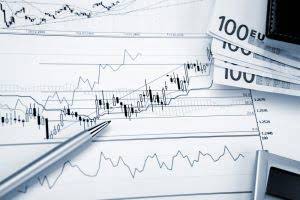How to Calculate Salvage Value

Sarah Sharkey is a personal finance writer with a master’s degree in management from the Hough School of Business at the University of Florida. She has written for numerous personal finance publications including Money Under 30 and The College Investor. This is often the case with low-cost assets such as office supplies or furniture.
Acquisition Cost
In this article, we will delve into the concept of salvage value, its calculation, and its significance in asset management. The double-declining balance (DDB) method uses a depreciation rate that is twice the rate of straight-line depreciation. Therefore, the DDB method would record depreciation expenses at (20% × 2) or 40% of the remaining depreciable amount per year. As the salvage value is extremely minimal, the organizations may depreciate their assets to $0. The salvage amount or value holds an important place while calculating depreciation and can affect the total depreciable amount used by the company in its depreciation schedule.
What if the Salvage Value of any Asset is Zero?
Though there is no precise formula for calculating an asset’s salvage value, two methods are commonly used in practice. The insurance company will use past auction results for salvage vehicles to determine how much of their costs they can recoup if the car is a total loss. If a specialty vehicle is deemed a total loss, it can often sell for a much higher salvage value at auction salvage value than a commonplace vehicle.
- Depreciation, on the other hand, is the systematic allocation of the cost of an asset over its useful life.
- Enter the original value, depreciation rate, and age of the asset into the tool to calculate its salvage value.
- Sometimes, it’s about predicting the value of the thing when a lease or loan ends.
- Salvage value, also known as residual value or scrap value, refers to the estimated worth of an asset when it reaches the end of its productive life.
- After your assets like machinery have run their course and are no longer useful, it’s best to sell them.
- On the other hand, book value is the value of an asset as it appears on a company’s balance sheet.
Salvage Value Calculation
- While you might be able to get your insurer to increase the salvage value of your car, it likely won’t be enough to cover a new vehicle purchase.
- The value of an asset can change over time due to factors like age, condition, rarity, obsolescence, wear and tear, and market demand.
- In general, salvage vehicles are worth between 20% and 40% less than their Kelley Blue Book value.
- Both declining balance and DDB require a company to set an initial salvage value to determine the depreciable amount.
- The insurance company would determine the ACV of your vehicle as if you were not going to buy it back and deduct a certain percentage for the salvage value.
- If you’re buying the vehicle to acquire parts for repair, the car salvage price may be justified by the value of its components.
The market residual value is the estimated amount an asset can be sold for at the end of its useful life, excluding disposal costs. Businesses often conduct market research or consult industry experts to evaluate demand and pricing trends for similar used assets. Factors such as market saturation, technological obsolescence, and economic conditions play a role, as do regulatory considerations like environmental laws. Accurate estimation of residual value is crucial, as it balance sheet directly affects depreciation expense and the asset’s net book value on financial statements. Understanding salvage value is essential for businesses as it influences asset depreciation, impacting financial statements and tax obligations.


The concept helps in understanding how much value an asset retains over time and is critical in determining the annual depreciation expenses for financial reporting. The calculation of salvage value is a crucial aspect of asset management and financial planning, particularly in businesses where assets depreciate over time. The salvage value is the estimated residual value of an asset at the end of its useful life. Understanding this value is essential for accurate depreciation accounting and for making informed decisions about when to retire or replace an asset.
- In the “Asset Age (Years)” field, input the number of years the asset has been in use since its purchase.
- Depreciation expense is reported on the income statement and reduces the value of the asset on the balance sheet.
- On the other hand, book value is defined as the value of the asset exactly how it appears on the balance sheet of the company.
- It represents the amount that a company could sell the asset for after it has been fully depreciated.
- This ensures a precise calculation of depreciation expenses, which ultimately impacts the estimated salvage value.
- Let’s dive into some examples to make the concept of salvage value more concrete.
The salvage value is the estimated residual value of the asset at the end of its useful life. Salvage value, also known as residual value or scrap value, is a fundamental concept in accounting and asset management. It refers to the estimated value that an asset will have at the end of its useful life. Understanding how to accurately calculate salvage value is essential for businesses to manage their assets effectively. Salvage value refers to the estimated residual value of an asset at the end of its useful life.
- From an accounting perspective, it affects companies’ depreciation and amortization expenses.
- Useful life refers to the expected time an asset will be productive for a business.
- Ignoring taxes on gains from asset sales can lead to overestimating the asset’s value, resulting in incorrect financial reporting.
- Salvage value is a concept that holds significant importance in the world of business.
- Salvage value is used in financial reporting to calculate the depreciation of an asset over its useful life.

Also integrating an AI mechanism like ERP.AI to your ERP system can make it smarter by enhancing enterprise process, data governance & decision-making. On the balance sheet, salvage value contributes to an asset’s net book value, impacting a company’s financial position. A higher net book value may enhance the asset base, which can be favorable when seeking financing.
Suppose a company spent $1 million purchasing machinery and tools, which are expected to be useful for five years and then be sold for $200k. Each year, the depreciation expense is $10,000 and four years have passed, so the accumulated depreciation to date is $40,000. Briefly, suppose we’re currently attempting to determine the salvage value of a car, which was purchased four years ago for $100,000. The useful life assumption estimates the number of years an asset is expected to remain productive and generate revenue. Before diving into calculations, it is crucial to understand the basics of salvage value.

From an accounting standpoint, salvage value represents the amount that can be recovered from selling the asset after its useful life. This value is typically estimated based on factors such as market conditions, asset condition, and demand. When calculating depreciation, you subtract the salvage value from the initial cost. To illustrate this, consider the example of a car that has been totaled and sold for scrap metal. The difference between the initial purchase price and the amount it sold for is AI in Accounting the salvage value.

